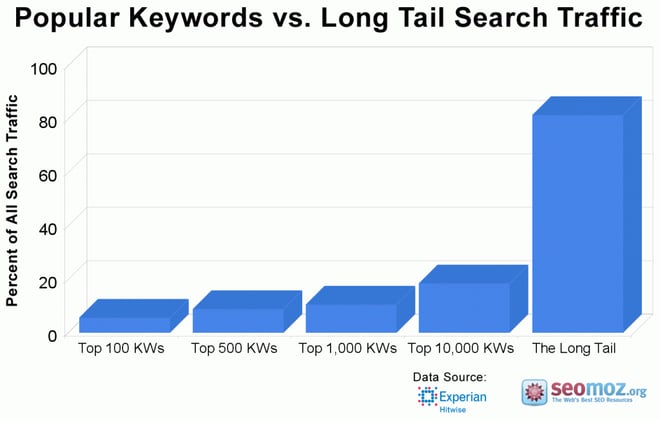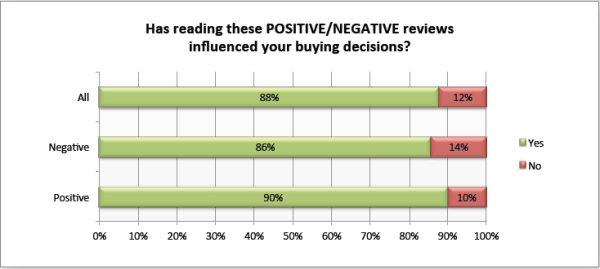
E-commerce services provide a means to create powerful SEO for outdoor brands over other non-sales websites. There most certainly is a science to e-Commerce website design and operation of e-Commerce fulfillment services. And while a certain approach may work like a charm for one outdoor industry brand, it’s never assured that it works across the board for another.
The real trick is in finding your niche. Here are three reasons that e-Commerce marketing methods for your outdoor industry brands e-Commerce strategy can help you stay ahead of Google’s constantly changing algorithms.
E-commerce Sites Lend Themselves to the Use of Long Tail Keywords
Long tail keywords are two, three or four-word groupings of words (sometimes more) used to create a very specific search term. These longer search terms are perfect for use in an e-Commerce store's product descriptions and listings. can get you ranked for your store’s products and listings quickly. They also are powerful traffic drivers that can help you attract more visitors each month. One of the most respected names in Search Engine Optimization (SEO), Neil Patel, uses a long tail keyword strategy to rank websites time and time again, in particular, e-Commerce websites.
With the proper research, an outdoor industry brand can easily create thousands of these traffic-driving long tail keywords for placement throughout well-written product descriptions. These can be used to easily rank that product on the first pages of the search engine results. Doing so will result in more traffic and more conversions over time.
Reviews Drive SEO
Hosting verified product review on your site is also beneficial to SEO, too. Since the reviews add a steady stream of fresh, relevant content to your product pages, they also can help your pages rank higher than your competitors’ because they feature more content that’s constantly refreshed. Combined with the aforementioned statistics, they represent an easy way to help give your sales a strong boost.
Online product reviews have been shown to be a powerful tool that can help you improve brand loyalty and customer retention as well as helping you attract new customers to your business. According to a Marketing Land report, “90% of customers say buying decisions are influenced by online reviews.”
Image courtesy Marketing Land
Video Provides Rich SEO Opportunities
Good video content is necessary to present your brand's products. Ideally, you want a video for all your products that consumers want to enjoy and share. Video content can be responsible for successfully attracting a substantial number of inbound links and social shares for the website in question. In an analysis by Kissmetrics of videos used by Dollar Shave Club and Moz, they prove that, when used correctly, videos really can provide a huge boost to your SEO campaign.
Embedding a video on your e-Commerce website not only will increase the length of time that visitors stick around, but, also, the number of conversions to paying customers, which, ultimately, is what SEO is all about.
Product videos are perhaps the most common way that retailers increase the conversion rate of their website using video content. Hundreds and thousands of retailers are making use of product videos these days, and it’s easy to see why.
According to Invodo, 52% of consumers say that watching product videos makes them feel more confident about going ahead and making a purchase.
Additionally, product videos increase your ability to create video rich snippets that help you stand out from the other nine search results on that particular page, and, therefore, searchers will be more inclined to click your result, which will increase traffic to your website.
You’ll be able to show searchers a thumbnail of your video and the length of your video. Make sure the thumbnail stands out and sums up what the video is about if you want to maximize conversions.
E-commerce + Inbound Marketing In One Platform = A SEO Opportunity to Drive Sales
Another emerging opportunity for outdoor brands is to combine a robust CRM, automated marketing, sales and customer experience platform with a top-notch e-Commerce store. Outdoor brands now have the opportunity to utilize such a dynamic duo through the recent native integration of the Shopify app store with HubSpot. HubSpot’s integration will allow Shopify merchants to bring specific sales data from the user’s Shopify store, including customers, orders, and products, into the HubSpot platform. The combined power of Shopify and HubSpot can give outdoor brands the tools they need to build much more sophisticated e-commerce marketing strategies."
The new integration will make it easier than ever to bring HubSpot's power and insights to online merchants. Customers will be able to see online sales in HubSpot as deals, organize and analyze purchasing patterns, and measure customer lifetime value. The new integration will help e-commerce marketers complete specific e-commerce tasks, like sending transactional emails and building workflows for abandoned shopping cart remarketing.
(For customers not on the Shopify platform, HubSpot also announced its e-Commerce Bridge framework, a new API package that provides a streamlined and official way for developers to connect an online store to HubSpot. This will allow HubSpot customers to build custom integrations, or HubSpot partners to build e-Commerce integrations through the Connect Partner program.
A Complete Guide to Outdoor Industry Brands e-Commerce
E-commerce Sites are Perfect for Providing a Complete Customer Experience
Not long ago you could read articles that used the term "age of the consumer" or "age of the customer." With the growth in e-Commerce and omnichannel sales, a new term you should become aware of an embrace is "the age of the customer experience (CX)."
According to Gartner data, 42% of CEOs say that better CX was the key change that has driven more wins. Another report from Walker Insights indicates that by 2020, customer experience will overtake price and product as the key brand differentiators. However, if you can't be found, you don't even have the opportunity to be in the game. If you want to be in the game, you need to succeed at executing an outdoor industry SEO strategy so customers can start a rewarding CX with your company and its brands.
Shopify, Magento, Big-Commerce, Shopping Cart and other e-Commerce website platforms have truly changed the individual buyer and seller market. However, because of the convenience and lower startup costs, the e-Commerce digital competition is fierce. Even if you have a superior product or amazing price-point; you might not get the sales volume you need. This fierce competition ultimately forced some of the most creative minds in the realm of marketing to find proven best practice solutions to compete in the saturated e-Commerce market.
SEO’s role in the marketing mix is to drive more traffic to your site so that it can convert them to customers. Ideally, those shoppers are far enough along in their own decision-making process to make a purchase. Ideally, the SEO program has optimized the right pages for search queries with purchase intent, in the right way, to lure the right prospects in to purchase.
What is the foundation of SEO in your e-Commerce strategy? Your foundation should be based on developing and executing a digital inbound marketing strategy that is optimized for SEO.
Inbound Outdoors Digital Marketing As A Foundation
Let's assume for a minute that an e-Commerce site has an amazing design backed by data and the sales platform is beautifully streamlined into a convenient user experience. Plus, you even have a high converting PPC campaign on AdWords with positive ROI, and you have a content marketing team writing about your product and business, combined with a data-supported social media marketing campaign. All this is well and good, but it'll be pointless without fully optimizing your posts from an SEO perspective.
You're doing everything right, but e-Commerce SEO is a little bit different because there are so many additional variables that can be utilized to optimize your site. e-Commerce sites have upper-hand when it comes to marketing because of the relevancy potential and high volume production for your target topics or keywords.
Have you ever hit a road-block on blog topics? Not only are relevant topics hard to come up with after a while, it gets kind of boring writing about the same thing. However, you are a professional so you keep chugging along and find creative ways to keep your content alive and vibrant.
The thing is, even aggressive blog editorial calendars like a daily news site does not have a chance against an e-Commerce website with a large inventory.
Sit Back and Think About Why You Even Write Blog Articles
You write blogs to have more relevant and optimized content to present to search engine bots. Pure and simple. You follow Google best practices and produce. More posts with potential landing pages internally linked towards relevant content and keywords for your domain and pillar pages. As discussed earlier, however, there is a production capacity for blogs assuming you are creating high-quality articles.
Outside of blog posts, most websites don't have many options to expand and optimize their content with keywords. You usually have your top navigation pages which generally consist of:
- Home
- About Us
- Contact
- Team
- Resources
- Blog
- Services
- Products
You might have some subcategory pages for your main pillar pages and perhaps even lower-level categories. Optimize those and guess what? You need to crush blog posts.
When you have a digital store-front, you have all the usual pages plus product category pages, sub-category pages, brand pages, and product pages. In fact, some e-Commerce sites have even more page types. e-Commerce pages have tons of images where you can add unlimited amounts of pictures with optimized alt-text. Not to mention the potential rankings on each e-Commerce page for the page title, URL, meta description, H1 tags, and product or category descriptions optimized with your target keywords. You are looking at a goldmine of opportunity.
Each individual page comes with its own topic which makes writing and optimization so much easier! Combine all of these on-page optimizations for keyword and pillar topics with a consistent blog editorial calendar to create amazing results. Even if you simply start with just meta tag optimization for your e-Commerce pages plus an H1 tag, and skip the product description content, you are already going to start seeing crazy results.
Many businesses also add new products over-time which means that this growth can be expected to continue. There are also so seasonal sale category pages and products, clearance products, etc. I've even seen individual product pages get linked to a product review, case study, and testimonial pages internally linked. That's another page for each product! One product can create 5+ pages that can rank for your target topics and keywords.
While we’re discussing content strategy and attracting users to your site with your internal pages, you should become familiar with how Google Analytics e-Commerce data works with SEO.
There is a basic logic within the tool that will show you the number of organic searches that ended up on your site, and the keywords that lead them there. In Google Analytics, go to Acquisition > All Traffic > Channels, and then clicking on “Organic Search.”
This report will provide you with the most common search terms successfully leading consumers to your site. It will also provide information about how visitors who used the individual terms perform. For example, maybe the keyword “outdoor industry SEO” brings the most people to your site, but the keyword “outdoor industry marketing” leads to the most sales. With this information, you can focus more on using “outdoor industry marketing” in your SEO strategy.
Using this tool in Google Analytics can assist you in tracking your progress on your current SEO strategy. You will want to continually review and assess your real traffic data to know how close you are to the mark.
For more detailed SEO data, you should add Search Console for Google Analytics e-Commerce. This add-on provides exclusive SEO figures including the number of URL impressions in search results and post-click engagement for bounces or conversions. Make sure you add your website to the Search Console registry.
Yes, it is a lot of work but SEO isn't about easy, it's about creating opportunities to make your competition R.I.P.
In this highly globalized and competitive digital world, you need to use all the tools and options that are at your disposal. There are some aspects of SEO that is weighted in search algorithms a little less impactful than others, however, the variables that are available on e-Commerce sites are very valuable and can give you the gains that you want.


